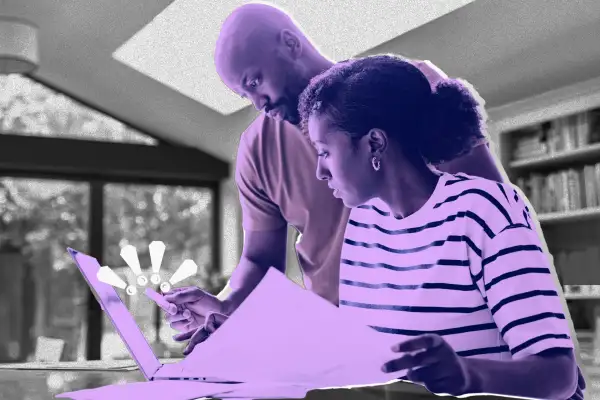As Credit Card Debt Hits $1 Trillion, Here Are 5 Ways to Pay off Your Balance

The economy is racking up the records this year, from the highest interest rates in decades to the lowest housing inventory in recent memory. The credit card industry just broke a record as well, as the cumulative American credit card debt recently reached $1 trillion for the first time ever, according to a report from the Federal Reserve.
A separate report from credit bureau TransUnion says the average consumer carries a credit card debt of $5,947 right now — the highest in a decade.
If you're like most Americans, you probably noticed yourself becoming more dependent on your credit card in the last couple of years. Runaway inflation has had many scrambling just to make ends meet, and borrowing money on credit is one of most convenient ways to unshoulder some of that burden.
Beyond their use for buying the basics, credit cards have offered a way for folks to cope with high medical bills, and you can expect them to play a larger role as student loan payments resume soon. While federal loans can't be paid off with credit cards, lots of people will likely resort to putting more expenses on their cards.
These expensive bills, coupled with high annual percentage rates (APRs), which range from 24% for a run-of-the-mill card to almost 30% for specialized cards, are a major factor that brought the country to its now $1 trillion credit card debt hole — an increase of 11% year over year.
Tips to help pay off credit card debt
If you are one of the many Americans out there struggling with your monthly balance, there are plenty of strategies to choose from for paying off credit card debt. Consider these options:
The snowball method
For those carrying over multiple credit card balances every month, the snowball method could be your best bet. For this strategy, you should pay down your debts from smallest to largest, eliminating one at a time rather than trying to take on all of them at once.
Juggling multiple debts can be daunting, and this method helps you to stick to a consistent plan. Just make sure that while you're focusing on paying down the smallest debt that you continue to make the minimum payments required for all of your debts.
The avalanche method
The debt avalanche method is similar to the snowball method, but focuses on APRs rather than the amount owed. When you are juggling multiple different types of loans, use the avalanche method to take on the highest APR debt you carry.
Doing this limits the amount of interest you accrue and keeps things manageable. And, ultimately, this method will get you in the black faster than the snowball method since you're accumulating less and less interest as you pay.
Negotiate with your creditor
Negotiating directly with your credit card company can be a worthwhile effort, if you have some rapport already. This method works best for those who have been long-standing customers with their credit card companies and hold a history of on-time payments.
You can settle a few different ways, be it through a lump sum payment or a reduction on your minimum payment or interest rate. You can read our guide on negotiating credit card debt to learn more about the process and some of the risks this method carries.
Debt consolidation
The snowball or avalanche method might not work for you if you have a daunting amount of debts and a series of high APRs. In this case, consolidation could be a solid plan. A debt consolidation loan is one option, in which you apply for one big loan to pay off multiple debts, leaving you with a single repayment.
Alternately, you could opt for a balance transfer card — a credit card with a low or zero-interest introductory period (anywhere from 12 to 21 months) that you can transfer existing debt to.
Credit counseling services
Asking for help is always an option. Credit counselors exist for the sole purpose of helping people reduce their debts, pairing clients with an advisor who can teach you how to tackle your debt and help you to tailor a pay-off plan to your financial situation.
While many of these services are non-profits, though, you'll still probably need to pay. Federal Debt Management Plan (DMP) fees will run you up to $79, and there may be smaller monthly charges beyond that.
More from Money:
More Cash-Strapped Americans Are Raiding Their 401(k)s: Report

